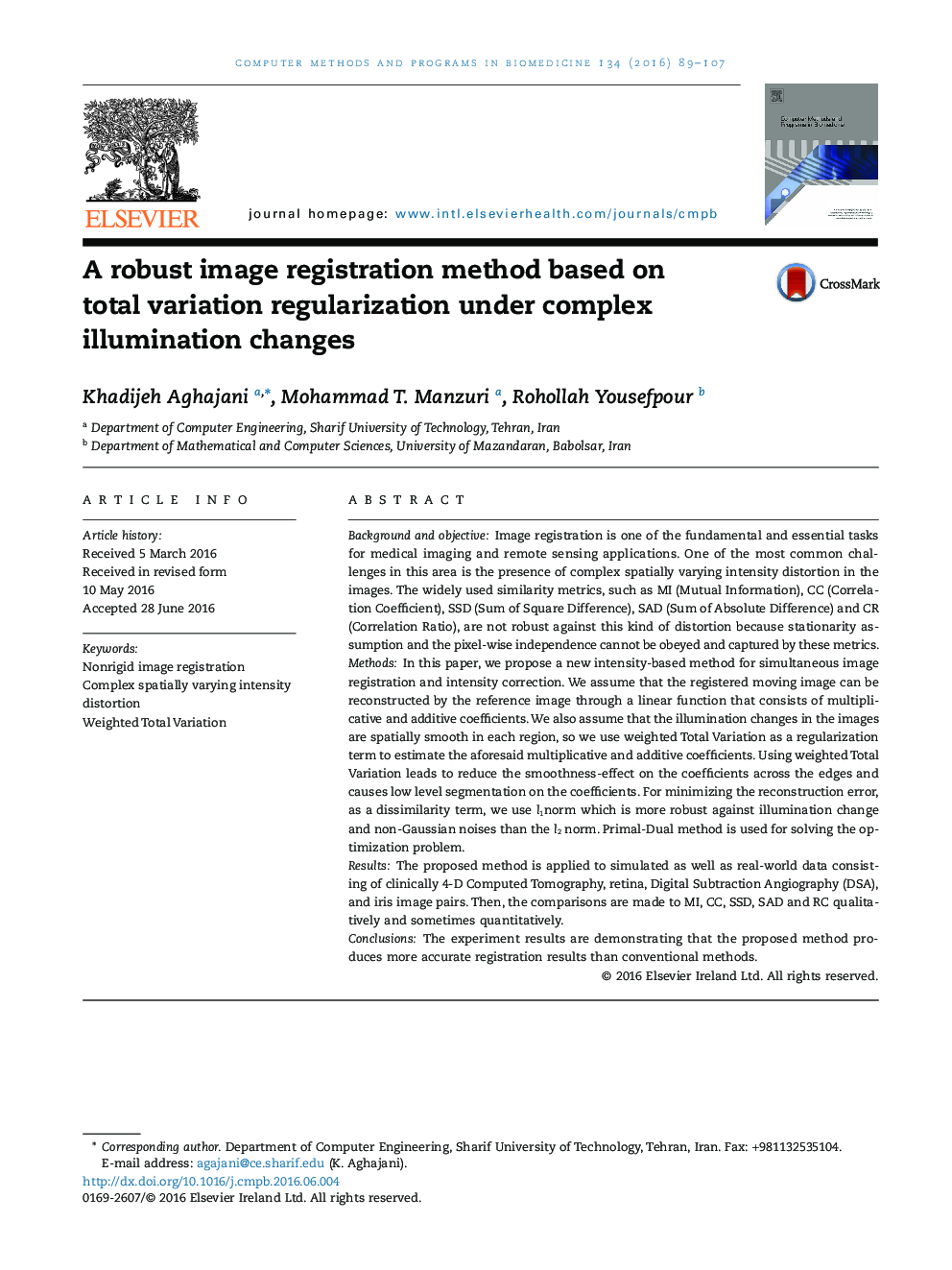| Article ID | Journal | Published Year | Pages | File Type |
|---|---|---|---|---|
| 466283 | Computer Methods and Programs in Biomedicine | 2016 | 19 Pages |
•In this study, a robust method to register the image pairs in the presence of locally varying intensity distortion is proposed.•The proposed method does registration and intensity correction, simultaneously.•We assume that the registered moving image can be reconstructed by the reference image through a linear function.•Weighted Total Variation is used as a regularization term on multiplicative and additive coefficients.•Weighted Total Variation reduces the smoothness-effect on the coefficients across the edges.
Background and objectiveImage registration is one of the fundamental and essential tasks for medical imaging and remote sensing applications. One of the most common challenges in this area is the presence of complex spatially varying intensity distortion in the images. The widely used similarity metrics, such as MI (Mutual Information), CC (Correlation Coefficient), SSD (Sum of Square Difference), SAD (Sum of Absolute Difference) and CR (Correlation Ratio), are not robust against this kind of distortion because stationarity assumption and the pixel-wise independence cannot be obeyed and captured by these metrics.MethodsIn this paper, we propose a new intensity-based method for simultaneous image registration and intensity correction. We assume that the registered moving image can be reconstructed by the reference image through a linear function that consists of multiplicative and additive coefficients. We also assume that the illumination changes in the images are spatially smooth in each region, so we use weighted Total Variation as a regularization term to estimate the aforesaid multiplicative and additive coefficients. Using weighted Total Variation leads to reduce the smoothness-effect on the coefficients across the edges and causes low level segmentation on the coefficients. For minimizing the reconstruction error, as a dissimilarity term, we use l1norm which is more robust against illumination change and non-Gaussian noises than the l2 norm. Primal-Dual method is used for solving the optimization problem.ResultsThe proposed method is applied to simulated as well as real-world data consisting of clinically 4-D Computed Tomography, retina, Digital Subtraction Angiography (DSA), and iris image pairs. Then, the comparisons are made to MI, CC, SSD, SAD and RC qualitatively and sometimes quantitatively.ConclusionsThe experiment results are demonstrating that the proposed method produces more accurate registration results than conventional methods.
Graphical AbstractFigure optionsDownload full-size imageDownload high-quality image (60 K)Download as PowerPoint slide
